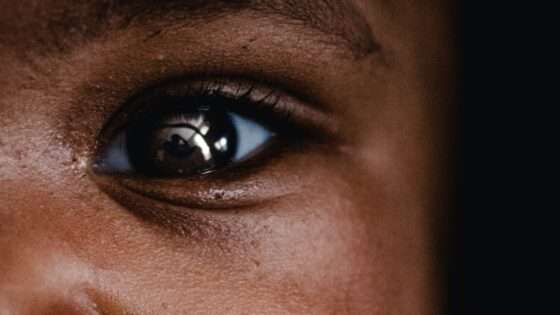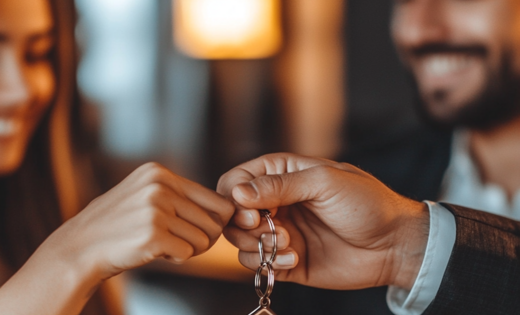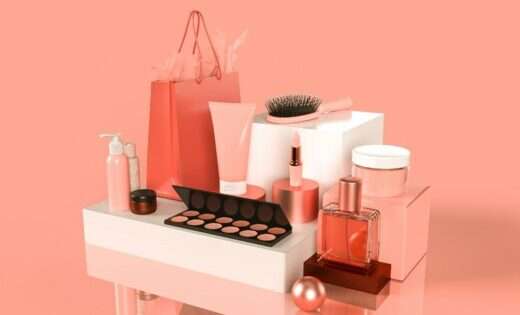on
BY SIMONE J. SMITH
At the end of last year, I underwent a major surgery to remove a massive fibroid – when I woke up from the surgery, my doctor told me that they underestimated the size of the fibroid, and that it had been the size of a bowling ball!
The recovery has been slow and incredibly painful, and this experience has made me hyper-aware of the factors that might contribute to fibroid growth. I started by examining my diet, but then something unexpected caught my attention. My elder, Michael E. Williams, sent me an article about the growing concern over carcinogens in Black hair products. This sent me down a deep dive into the potential impact of these products on my health, particularly in relation to fibroid development.
In addition to the risks posed by cancer-causing agents, there is a significant health concern for African Caribbean women, an increased prevalence of uterine fibroids. Fibroids are non-cancerous growths that develop in the uterus and can cause pain, heavy bleeding, and reproductive complications. Research has shown that African Caribbean women are three times more likely to develop fibroids than white women, and many scientists are investigating the link between environmental toxins, including chemicals found in hair products, and the development of fibroids.
With millions of African Caribbean women regularly using synthetic braids, it’s important to understand the full scope of these dangers. Synthetic hair often sits close to the scalp, creating a direct pathway for harmful chemicals to enter the body. Prolonged exposure increases the likelihood of skin irritations, respiratory issues, and even reproductive system damage. Until now, the exposure to harmful ingredients in synthetic braids has been an underrecognized and unaddressed public health issue for African Caribbean communities, and for good reason.
For decades, synthetic braids and hair extensions have been a beloved option for African Caribbean women. The styles offer: creative expression, versatility, convenience, and the ability to protect natural hair from damage. Despite their popularity, synthetic hair products are coming under increased scrutiny due to the toxic chemicals that some may contain, including known carcinogens like acrylonitrile and vinyl chloride.
In an article titled, “Deadly Truth Your Hairstylist Won’t Tell You: The Silent Killer Lurking in Your…” (September 24th, 2024) the author shares that the global hair extension and wig market, which includes synthetic braids, is projected to surpass $19.12 billion by 2028. Among the largest consumer groups in this industry are women of colour, who rely on these products to achieve various protective styles. The prevalence of synthetic braids is not limited to adult women; preteens and teenagers also frequently use these styles, exposing them to potential long-term health risks.
One product, particularly Kanekalon, is a modacrylic fiber widely used in synthetic braids. These fibers contain the two products I mentioned earlier: acrylonitrile and vinyl chloride. Let’s discuss what makes these chemicals harmful.
Acrylonitrile: This chemical is classified as a probable human carcinogen by the Environmental Protection Agency (EPA). Studies have linked acrylonitrile to an increased risk of various cancers, including lung, colon, and breast cancer. In synthetic braids, acrylonitrile can be absorbed through the scalp and skin, especially when the braids are worn for prolonged periods. Something else to know; when synthetic braids containing these products are exposed to heat—whether from sealing the braids, or during styling—acrylonitrile can be released into the air, increasing the risk of inhalation.
Vinyl Chloride: Known as a potent carcinogen, vinyl chloride has been linked to a range of cancers, including liver, brain, and lung cancers. The National Cancer Institute warns of vinyl chloride’s direct connection to both rare and common forms of cancer. Its presence in synthetic hair products introduces a significant risk for African Caribbean women who frequently use these extensions.
So, what now? What can we do to avoid these chemicals, especially because most of us are actually wearing synthetic hair right now? There are steps that women can take to reduce their exposure to harmful chemicals:
Choose Human Hair Extensions: Human hair extensions are expensive, but are a safer alternative to synthetic braids, as they do not contain the same toxic chemicals.
Support Safer Product Legislation: What are the regulations that are in place right now to prevent the sale of these products in Canada? I am going to do some more research on this, and advocate for stronger regulation of beauty products, particularly those marketed to African Caribbean women.
Beautician Education: Professional braiders should also be educated in the chemical makeup and potential risks of synthetic braids. One way to achieve this is by standardizing cosmetology education requirements, which may help reduce exposure of consumers and hair braiding professionals, who are also exposed to carcinogenic compounds in synthetic extensions during the 5–8-h installation process.
This is a tough one, trust me. It will be hard for some of us to let go of this beauty ritual, but to what extent are you going to hold on to it, to the extent of your health?
REFERENCES:
https://pubmed.ncbi.nlm.nih.gov/37274553/
https://www.thelancet.com/journals/lanam/article/PIIS2667-193X(23)00091-1/fulltext
https://pmc.ncbi.nlm.nih.gov/articles/PMC10238826/
Synthetic Braiding Hair Identified As A Silent Health Threat to Black Women
Stay in the loop with exclusive news, stories, and insights—delivered straight to your inbox. No fluff, just real content that matters. Sign up today!
We, as humans are guaranteed certain things in life: stressors, taxes, bills and death are the first thoughts that pop to mind. It is not uncommon that many people find a hard time dealing with these daily life stressors, and at times will find themselves losing control over their lives. Simone Jennifer Smith’s great passion is using the gifts that have been given to her, to help educate her clients on how to live meaningful lives. The Hear to Help Team consists of powerfully motivated individuals, who like Simone, see that there is a need in this world; a need for real connection. As the founder and Director of Hear 2 Help, Simone leads a team that goes out into the community day to day, servicing families with their educational, legal and mental health needs.Her dedication shows in her Toronto Caribbean newspaper articles, and in her role as a host on the TCN TV Network.













